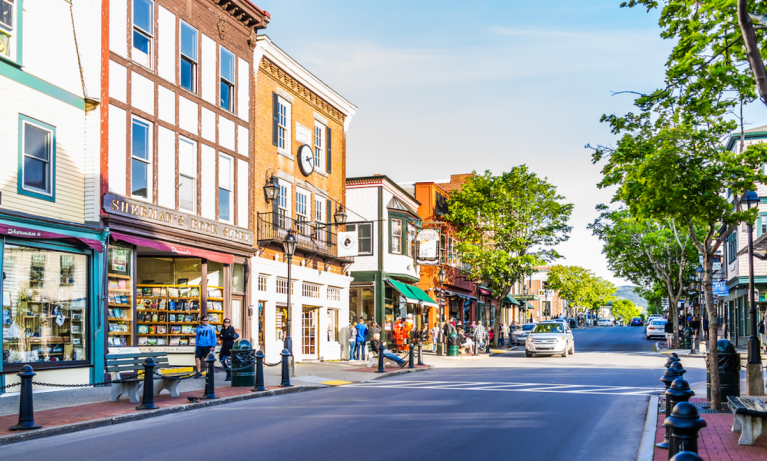Main Street businesses, vital to the U.S. economy, have seen their growth rate significantly fade since late 2024 through Q1 2025, lagging behind the overall U.S. business growth despite a strong post-pandemic rebound.
This slowdown is largely attributed to fewer new establishments and slower wage growth compared to larger firms, with restaurants and retail sectors particularly hard hit nationwide, as we found in our latest survey among small businesses. Main Street businesses are defined as small, brick-and-mortar firms with physical operations, employees and annual revenues of less than $10 million. They pay one-quarter of the country’s wages.
Historically, these workhorse businesses have often outperformed their larger peers, even bouncing back strongly after the initial pandemic shock through mid-2022, fueled by federal aid and surging consumer demand.
A Reversal
But over the four quarters ending in Q1 2025, Main Street businesses grew at a notably slower pace than the overall U.S. business index. While the overall business index rose 3.6%, Main Street managed only 2.4% growth.
Overall, Main Street launched relatively fewer new establishments, with a net increase of just 0.4% compared to 2.9% across the whole economy. Second, Main Street businesses grew their wages at a comparatively slow pace of 2.3% versus the 3.2% overall rate.
The struggles faced by Main Street are not uniform, with certain sectors and geographies bearing the brunt of the downturn.
Eating and drinking establishments were the hardest-hit sectors in the last 12 months, contracting by 2.4%. This decline was primarily driven by a fall in employment, likely exacerbated by tight labor markets.
Retail fared almost as poorly, sliding 2.1%. Beyond these major categories, personal services and repair and maintenance segments also experienced declines, each falling by 0.8%.
These struggles reflect broader challenges such as persistent inflation, cautious consumer spending, and the impact of the U.S. government’s global tariffs agenda.
Geographic Disparities
Geographically, the picture is equally disparate, with significant regional differences emerging. While some regions showed resilience, others demonstrated clear contraction or significantly slowed growth. The Northeast was particularly impacted, contracting by 1.4%. This region saw a significant decline in both the number of establishments and employment.
The Mountain region did not fare much better, shrinking by 0.7%, also primarily due to a loss of workers. Even the Southwest, while managing a slight 0.5% growth, experienced a drop in new establishments despite a substantial employment gain, indicating a challenging environment for business creation. These regional disparities underscore how economic pressures are not evenly distributed across the country.
In contrast to these struggling segments, some areas of Main Street did manage to notch strong growth, such as professional services, building contractors, and healthcare, and regions like the Pacific West.
This slowdown for small, brick-and-mortar firms, which are deeply embedded in local economies, presents a significant concern for overall economic growth and stability across the U.S.




